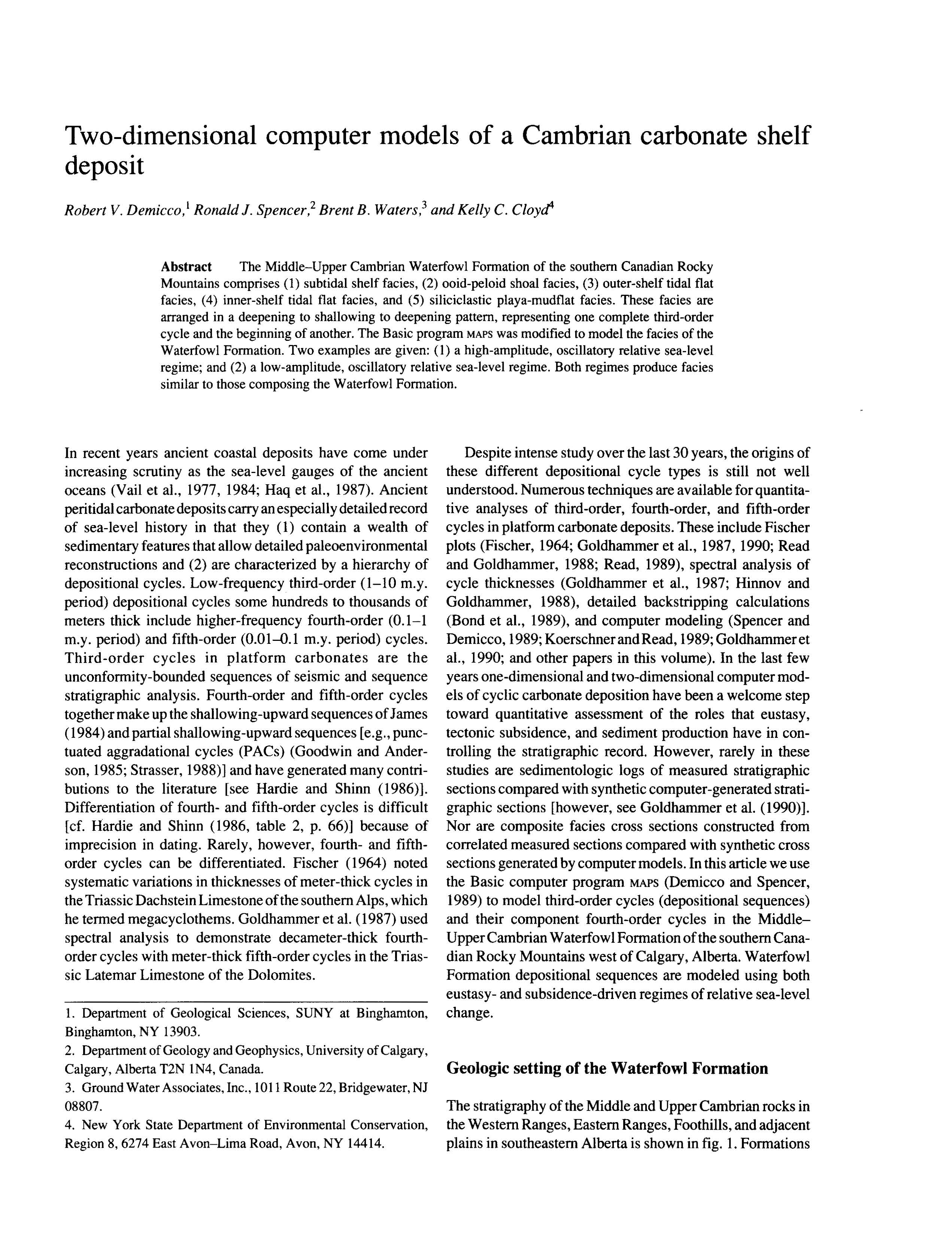Two-dimensional computer models of a Cambrian carbonate shelf deposit
DOI:
https://doi.org/10.17161/kgsbulletin.no.233.20472Abstract
The Middle-Upper Cambrian Waterfowl Formation of the southern Canadian Rocky Mountains comprises (1) subtidal shelf facies, (2) ooid-peloid shoal facies, (3) outer-shelf tidal flat facies, (4) inner-shelf tidal flat facies, and (5) siliciclastic playa-mudflat facies. These facies are arranged in a deepening to shallowing to deepening pattern, representing one complete third-order cycle and the beginning of another. The Basic program MAPS was modified to model the facies of the Waterfowl Formation. Two examples are given: (1) a high-amplitude, oscillatory relative sea-level regime; and (2) a low-amplitude, oscillatory relative sea-level regime. Both regimes produce facies similar to those composing the Waterfowl Formation.

